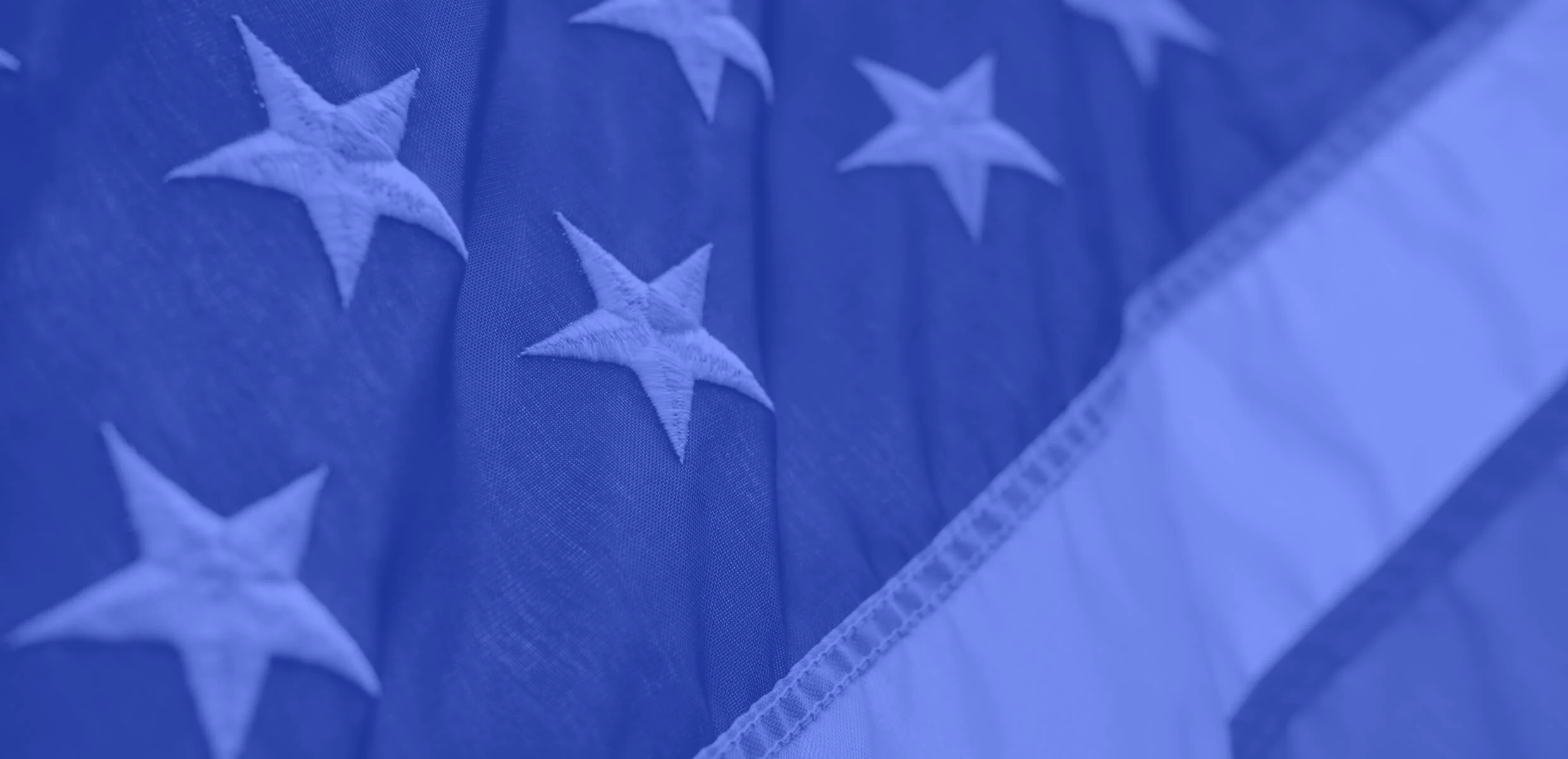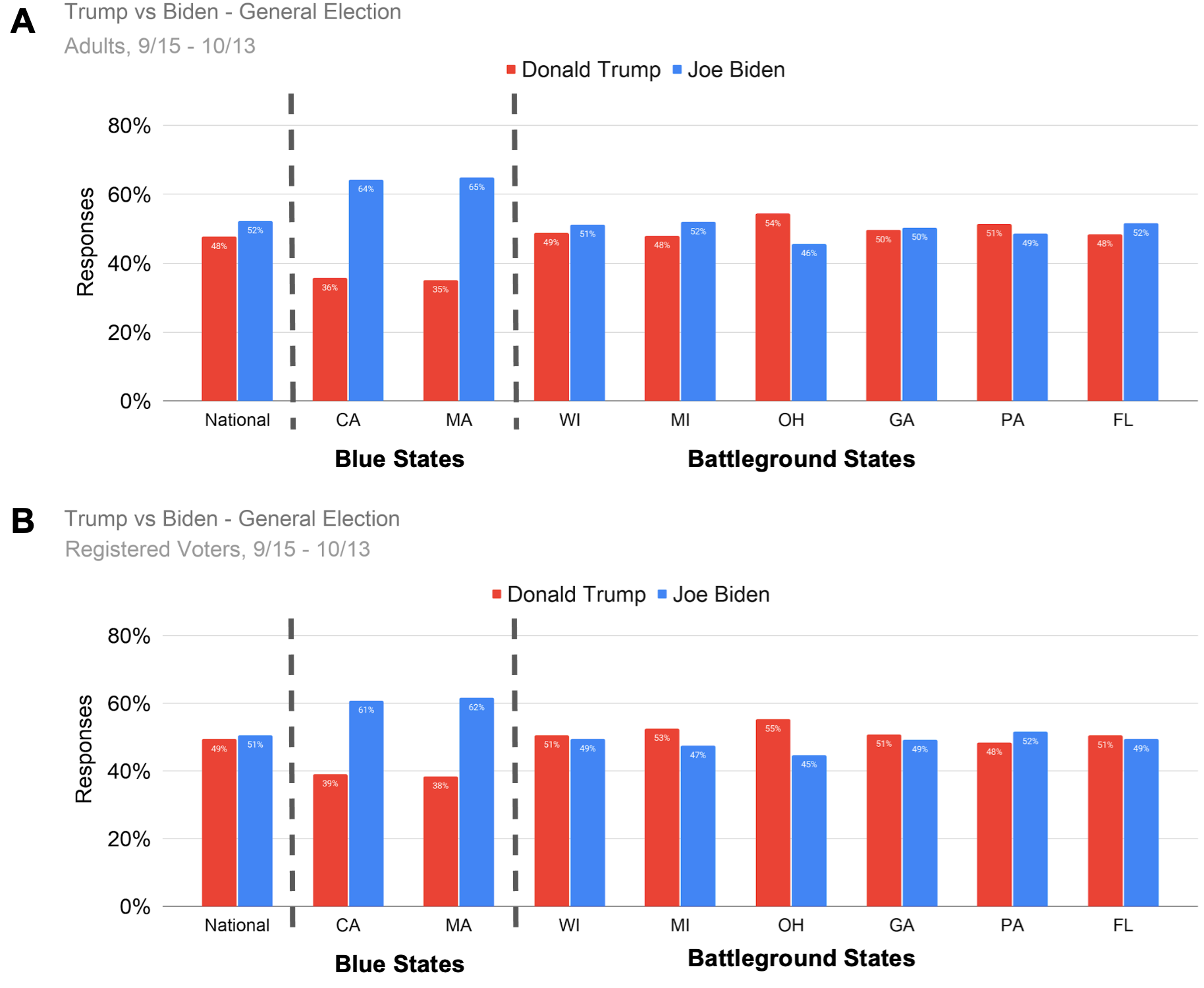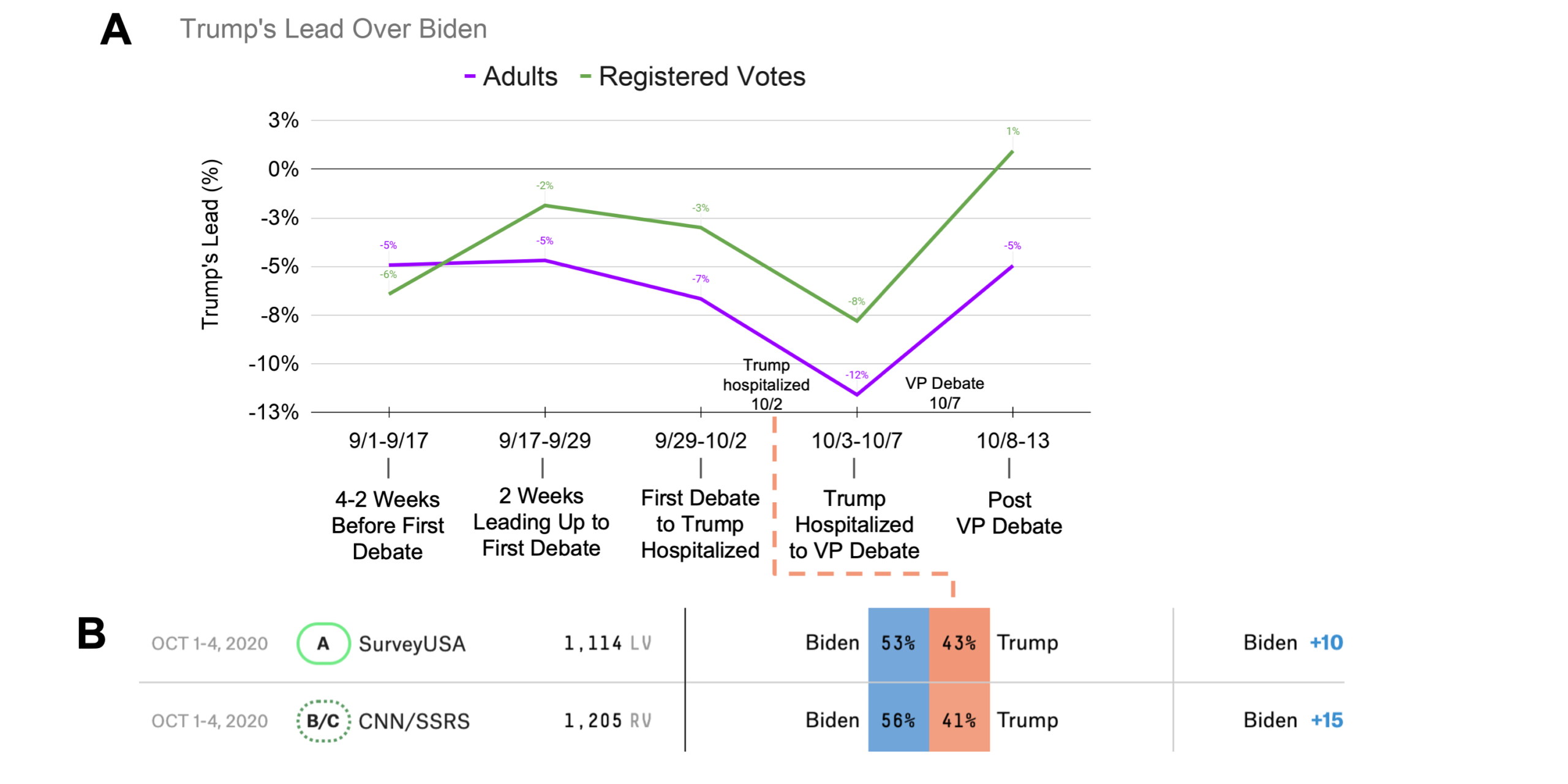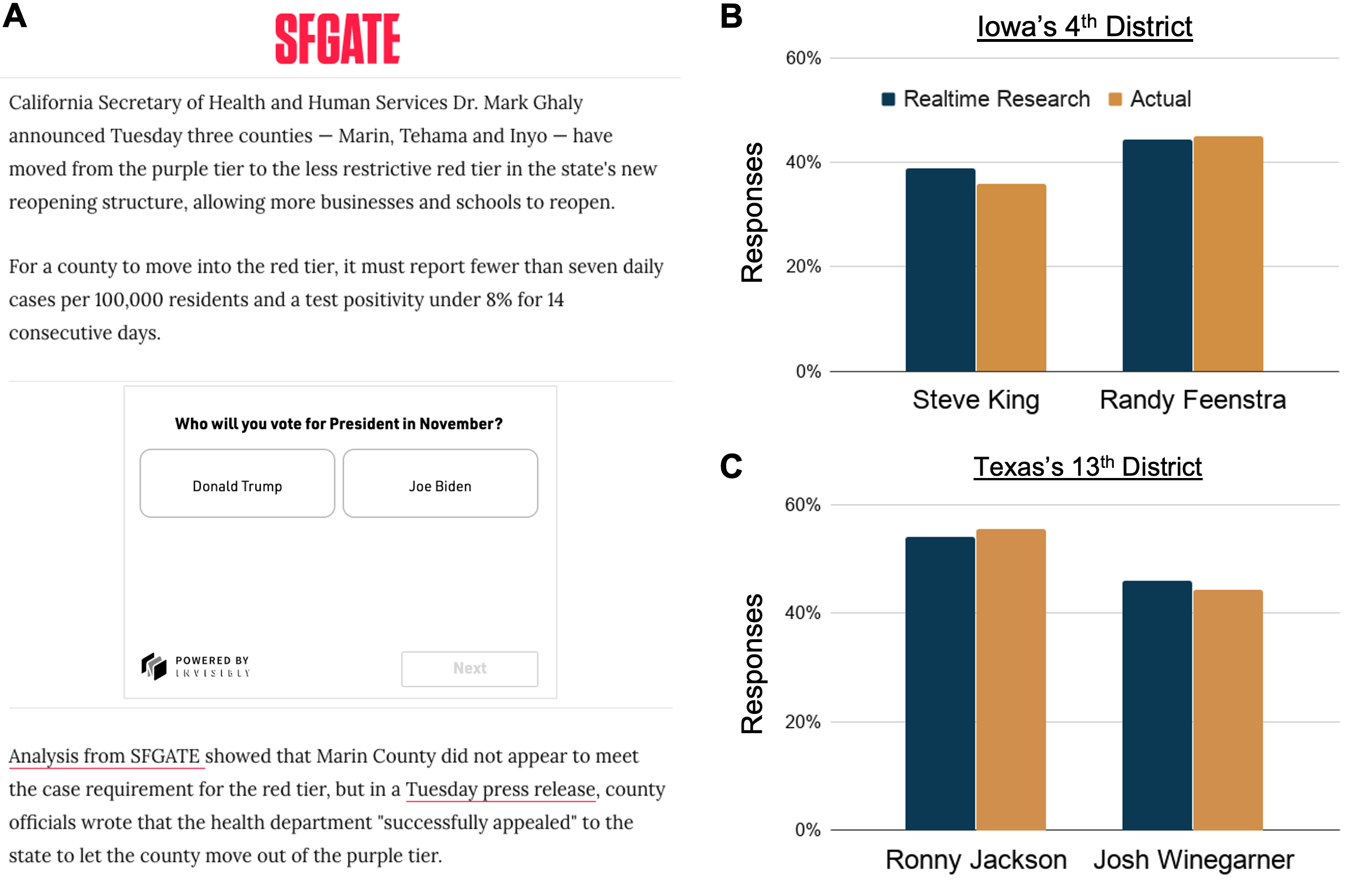Pulse on the Presidency, Oct 15

Given that polls largely mispredicted the outcome of the 2016 US presidential election, there is reason to doubt their accuracy for the current 2020 election. Invisibly’s sophisticated polling technology overcomes some of the biases of traditional polling. Results from September and October show that Trump is slightly ahead in key battleground states.
Summary
- Given that conservatives are currently more uncomfortable with sharing their political views, traditional phone polling likely underrepresents Trump voters.
- Invisibly polling shows that Trump’s polling numbers have recovered in recent weeks and he is slightly ahead in battleground states.
- Our results here are based on 27,742 adults.
- Continued reliance on outdated polling methodology is likely to cause another failure in election forecasting in 2020.
The United States 2020 presidential election is a matter of intense national and international debate. Each week, dozens of polls collect samples and attempt to predict the outcome of the election based on current voter sentiment. Since most of these polls mispredicted the 2016 presidential election, however, there is reason to doubt the accuracy of traditional polling methods.
Results
Invisibly’s sophisticated polling technology shows that from September 15th to October 13th, Biden is ahead nationally and in some battleground states when including all adults surveyed (Figure 1A). However, among registered voters, Biden is ahead by only 2 points nationally and is down in key battleground states including Wisconsin, Michigan, Ohio, Georgia, and Florida (Figure 1B). Our sample includes 27,742 adults nationally, of which 12,849 are registered voters — this is an order of magnitude more respondents than a typical national poll. We continue to find that strong blue states like California and Massachusetts show Biden leading by roughly the same margin as Hilary Clinton’s victory in these states in 2016. The national margin of error is just under 1%.

Figure 1: Invisibly Polling Results. Joe Biden leads in traditionally blue states California and Massachusetts, while the race is much closer in battleground states. A. Invisibly polls among adults show Biden ahead nationally and ahead in some battleground states. B. Invisibly polls among registered voters show Biden in the lead nationally, but losing in key battleground states.
,
Because Invisibly’s polls produce results in real time, we can look for additional insights by trending national sentiment over time. We show that Donald Trump has had a recovery in polling in recent weeks (Figure 2A). Our polls are congruent with other polls which show the sharp dip in Trump’s lead around the time of his hospitalization (Figure 2B).

Figure 2: The Invisibly survey follows trends of other polls. A. We tracked Trump’s lead against Biden from 9/1-10/13. His lead fell significantly after the first debate and during his hospitalization but has bounced back since after the Vice Presidential debate and is even in the lead slightly amongst registered voters B. Two polls listed on fivethirtyeight.com show that during the time Trump was hospitalized for Covid-19 show Biden’s lead grew. Invisibly’s poll shows the same dip in Trump’s lead over a similar time frame amongst both registered voters and the general adult population. LV signifies likely voters; RV signifies registered voters.
Reducing polling bias
Traditional polls still rely on phone calls, usually to a landline. This personal approach may cause respondents to worry that their answer can be traced back to them. Recent research shows that right now, conservatives are more uncomfortable than liberals with sharing their political views, so some conservatives and undecided voters may not report that they support Trump, perhaps fearing social or even employment repercussions. Thus, the traditional polling method is prone to systematic bias whenever voters are less willing to voice public support for one candidate than for the other. This problem has been extensively documented and has affected both parties (e.g., after President Obama’s poor first debate performance in 2012, some democrats were reluctant to admit their support for the president). This phenomenon may have been responsible for skewing the polls in 2016. Given the persistence of both the outdated polling methodology and the reluctance of some to support Trump publicly, history is likely to repeat itself in 2020.
To combat this bias, Invisibly Polling uses our Realtime Research™ surveys, which use the internet rather than phones to collect responses. Our polls show a survey to people browsing the internet in a randomized manner; the survey is embedded in the content people are already reading (Figure 2A). Because the poll doesn’t force people to navigate away from their desired content to a branded partisan page, Invisibly polls feel much less personal and thus are more likely to capture people’s true beliefs. This research has been used to accurately predict numerous races (Figure 2B/C).

Figure 3. The Realtime Research™ survey unit and its accuracy. A. Questions are shown to the user on webpages. B. Most recently, Invisibly surveys predicted the outcomes of Iowa’s 4th District 2020 Republican primary and C. Texas’s 13th District 2020 Republican primary.
Discussion
Traditional polling suffers from systematic bias: outcomes are swayed by the extent to which supporters of each candidate feel comfortable with sharing their viewpoints. Not surprisingly, this bias leads to inaccurate predictions. Invisibly Polling mitigates this bias by asking voters for their opinion in a more depersonalized environment: random webpages on the internet. The anonymous feel of Invisibly Realtime Research™ captures the honest opinions of voters who might otherwise withhold their true voting intentions when asked over their personal phone lines.
Detailed Methods
From September 15th to October 13th, we asked Americans who they would vote for in the upcoming national election, how likely they were to vote, and where they stood on a variety of issues. Unlike Google Surveys—which block access to content until the questions are answered—Invisibly Realtime Research™ surveys are optional, ensuring that all responses are voluntary. We received responses from 27,742 adults in 4,094 cities; participants represented all 50 states.

Dr. Don Vaughn, Ph.D.
Dr. Don Vaughn is a neuroscientist, futurist, and communicator. As Head of Product at Invisibly, he is envisioning a better future by enabling people to take control of their personal data. He leverages his understanding of the brain to predict how people will use—and be used by—technology. Since graduating from Stanford, over 1 million people have viewed his TEDx talk. He has been featured on ABC, ESPN, Bloomberg and more.
